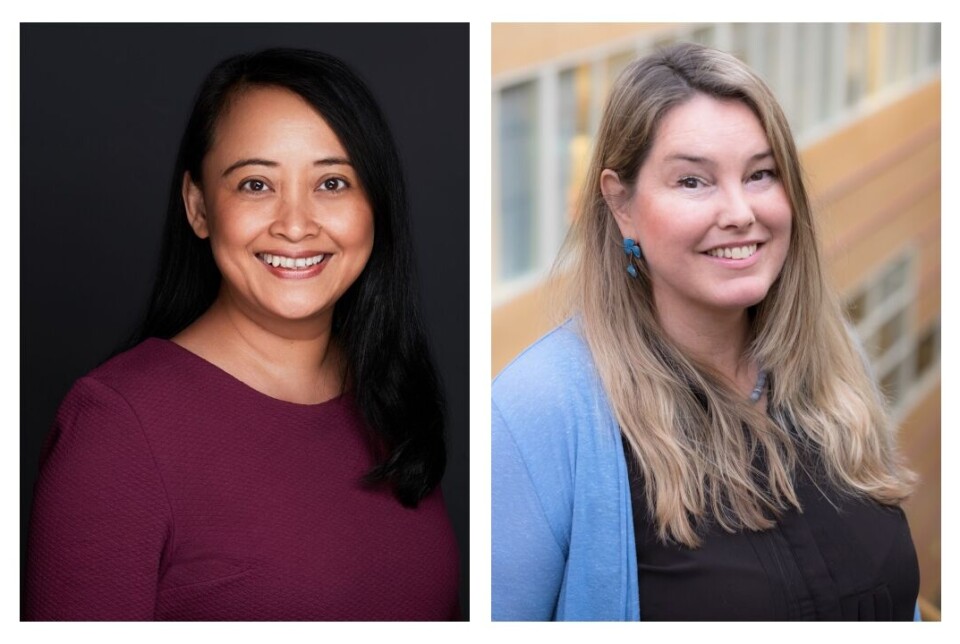
Researchers have identified the reasons behind the decline in students' academic performance
Much of it is due to the composition of the students.
- Many students do not master the language of instruction.
- Many students lack the necessary prior knowledge to keep up with lessons.
This is shown by a new Nordic research report on schools in Norway, Sweden, Finland, and Denmark.
The report was commissioned by the Nordic Council of Ministers and the IEA, the organisation responsible for the well-known school surveys TIMSS (mathematics and science) and PIRLS (reading literacy). The well-known PISA survey of 15-year-olds' academic performance is conducted by the OECD.
More demanding to be a teacher
“Even if the teacher's instruction is of good quality, it’s a challenge to teach in classes where many pupils struggle with the language, disrupt the lessons, or are tired and uninterested,” says Nani Teig. She is an associate professor at the University of Oslo’s Department of Teacher Education and School Research.
In a press release from the Nordic Council of Ministers, Teig points out that the teaching profession has become increasingly complex and demanding.
She advocates for strengthening teacher education so that teachers are better equipped to meet today's heterogeneous classrooms.
Restless and unprepared students
Together with Trude Nilsen and several Nordic colleagues, Teig has also made other findings in this study.
- One finding is that fewer students than before experiencing the teachers' instruction as clear.
“We see how the decline in student performance is connected to factors that prevent teachers from providing clear and good instruction,” Trude Nilsen tells sciencenorway.no.
She adds that in addition to students being restless and showing up unprepared at school, cognitive challenges are often involved.
“Students may also lack the necessary prior knowledge to understand what the teacher is teaching,” she says.
Background determines grades
The Nordic research colleagues see the same development in all the Nordic countries.
"The decline in academic performance is not the teachers' fault. The primary cause is the composition of the student population in schools," says Nilsem
Based on the IEA's TIMSS survey, researchers have been able to determine that students' ethnic and socioeconomic backgrounds now play a crucial role in how students in 4th and 8th grade (5th and 9th grade in Norway) perform in mathematics and science.

Differences in society are most evident in schools
Most viewed
“The immigration we have experienced in the Nordic countries leads to increased differences in society. This is perhaps most evident in schools,” Nilsen tells sciencenorway.no.
“At the same time, we see how teachers' competence and teaching quality can help reduce the gap between students from high socio-economic status homes and those from low socio-economic status homes,” she says.
However, the increased inequalities in society are not something that schools can fix alone, the researcher emphasises.
Receive different teaching
The IEA's TIMSS survey has become an important source of information about education systems worldwide.
The survey not only compares student performance across countries but also looks at teachers' qualifications, teaching methods, schools, and the support students receive at home.
In all four Nordic countries, researchers see how a pupil with a non-Nordic and lower socio-economic background can be compensated if placed in a class with ethnically Nordic pupils from higher socio-economic backgrounds.
Another observation in all four Nordic countries is that classes with many students from higher socio-economic status homes receive education with a greater emphasis on academic success, leading to higher quality teaching.
Particularly in Sweden, researchers found that the ethnic composition of students in a class affects school results.

Sweden is also the Nordic country that has gone the furthest in opening up to private schools. Previous studies have shown how this contributes to separating ethnically Swedish students from students with an immigrant background.
Teachers prefer strong students
Several international studies have shown that teachers often prefer to work at schools where students come from families with high socio-economic status. This can lead to the best-qualified teachers more frequently seeking employment at these schools.
If current trends continue, the Nordic Council of Ministers fears that the gap between privileged and less privileged students in the Nordic countries will increase even more.
The traditional equality in the Nordic education systems may be threatened, the organisation warns.
The researchers behind this new Nordic study also point to how different student groups are increasingly attending different schools. Students with parents who have money and other resources tend to seek out schools with higher average grades. In Sweden, this increasingly involves private schools.
Some possible solutions
To curb the growing class divides in schools, the researchers suggest several measures:
- We must prevent schools from segregating students based on their backgrounds. Measures that promote socio-economic and ethnic diversity in classrooms are needed.
- Teachers and schools should have higher expectations for all students.
- Schools must pay special attention to students who are struggling. These students should receive help to set goals.
- Teachers should be helped to gain a more accurate understanding of students' learning and progress. The Nordic researchers point out how schools in Norway, in particular, have made some progress in improving what is known as assessment practices among teachers.
———
Translated by Alette Bjordal Gjellesvik
Read the Norwegian version of this article on forskning.no
References:
Hansen, K.Y. & Gustafsson, J.E. Identifying the key source of deteriorating educational equity in Sweden between 1998 and 2014, International Journal of Educational Research, 2019. DOI: 10.1016/j.ijer.2018.09.012
Hansson, A. & Gustafsson, J.E. ‘Pedagogisk segregation: Lärarkompetens i den svenska grundskolan ur ett likvärdighetsperspektiv’ (Pedagogical segregation: Teacher competence in Swedish primary schools from an equality perspective), Pedagogisk Forskning i Sverige, 2016.
Teig, N., Nilsen, T. & Hansen, K.Y. (Eds.) Effective and Equitable Teacher Practice in Mathematics and Science Education. A Nordic Perspective Across Time and Groups of Students, Springer Cham, 2024.






































